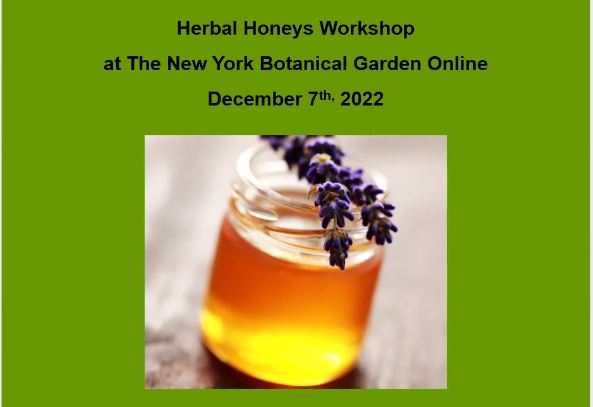
.
If you have any comments, observations, or questions about what you read here, remember you can always Contact Me
All content included on this site such as text, graphics and images is protected by U.S and international copyright law.
The compilation of all content on this site is the exclusive property of the site copyright holder.
Herbal Honeys, a New York Botanical Garden
Online Zoom class
Wednesday, 7 December 2022
The New York Botanical Garden has always offered a wide range of classes in their educational department, everything from botany, horticulture and landscape design to floral design, crafts, wellness and more. When covid-19 triggered online learning for school children, NYBG followed suit for those subjects where it was suitable. I found that there are certain benefits. With Herbal Honeys - Karine Gardineer taught most of the herbal honeys online workshop class from her home kitchen, demonstrating how to make infusions from honey and herbs for wellness.

Fortunately I have a number of images that serve to illustrate this entry.
Firstly, Karine discussed honey, honeybees, the history of honey and humans, and more.

While it might be interesting to become a beekeeper, she pointed out
there are apiaries. And finding one with 100 miles has some benefits.
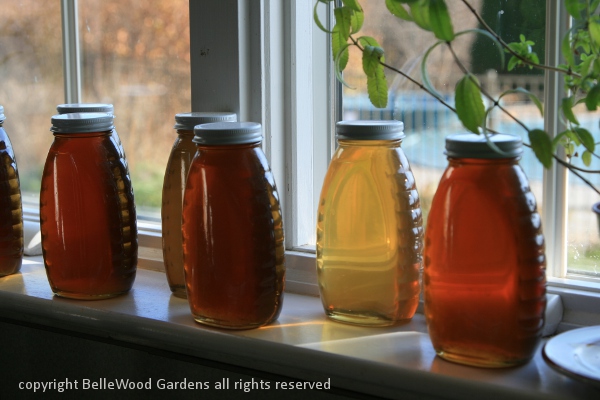
Karine recommends using raw, unheated honey. But not all honeys are the same.
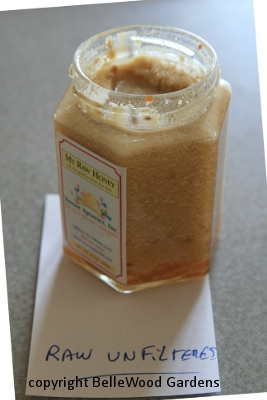 .
.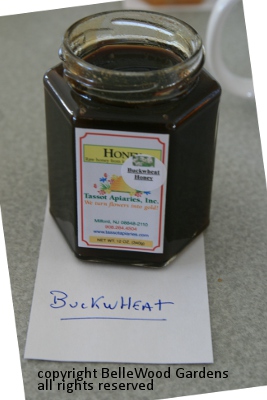
Raw honey may crystalize. Restore it by setting a glass jar in a container of warm water.
Varietal honeys are those from a single kind of flower. Clover is pale, buckwheat darkest
(and higher in anti-oxidents with healthful properties.) Only heat honey to 94° Fahrenheit.
In advance of the workshop all students (about a dozen of us) were sent
a PDF link for the class syllabus and multipage handout. There were a few
sentences about the health benefits for a dozen and a half herbs. And also
a page about making herbal honey infusions both with and without heat.

Lavender is incorporated in tisanes, potpourii, and honeys,
recognized for its many beneficial properties for centuries.
This page is from Peter Schoffer's Herbarius, published in 1485.

Bees also love lavender. Here, a bumble bee gathering nectar.
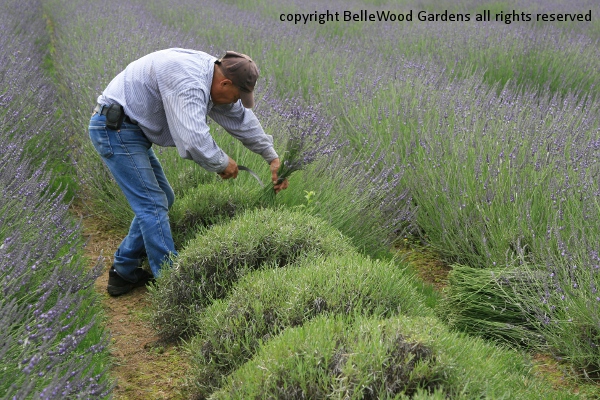
Lavender gathered, cut and dried, at Carousel Farm Lavender in Pennsylvania.
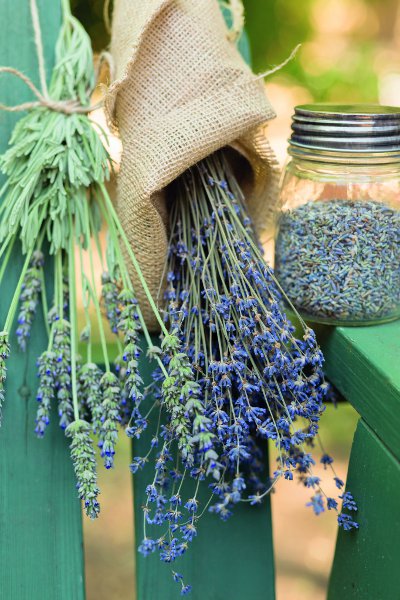
Dried herbs are better for infusing, Karine tells us, as moisture from fresh herbs can be problematical. Use one part dried lavender (or other herb) and cover with two parts honey warmed in a double boiler. Stir (chopsticks are useful for this!) and simmer, still in double boiler, for about two hours before straining and bottling.
Because we're zooming online, a few students are in their kitchens,
as the workshop continues they are also infusing honey with herbs.
Heated infusions are ready in a couple of hours. Those made without heat require a much longer, two to four week period. Again, use a proportion of one part herbs to two parts honey.

Karine used a half part of dried thyme and a half part dried sage to two parts honey.
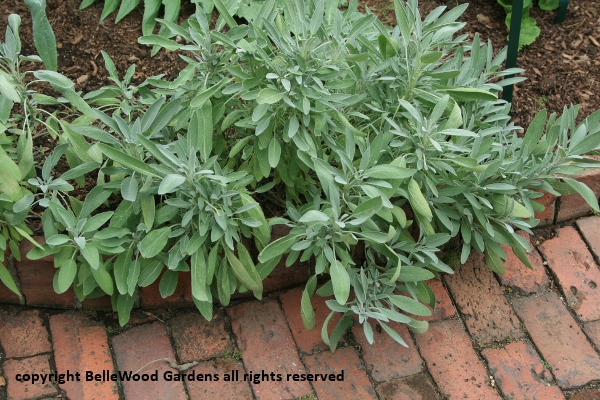
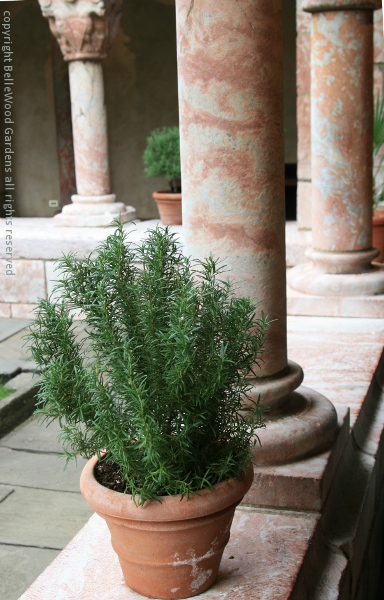
While rosemary, here at The Cloisters Bonnefont Cloister,
was not discussed I imagine it also has useful properties.
It was mentioned that herbal honey infusions would make lovely holiday gifts.
The two hours went quickly by. Even with the useful handouts I scribbled notes. Contact information at the bottom of the handouts means, Karine said, that if there are questions you may feel free to query her. She always loves teaching for the New York Botanical Garden. And visiting too, especially now for the holiday train show.
A good, informative evening, learning while sitting at home.
Go to nybg.org/learn/adult-education for information
about upcoming onsite and online classes.
Back to December
Back to the main Diary Page